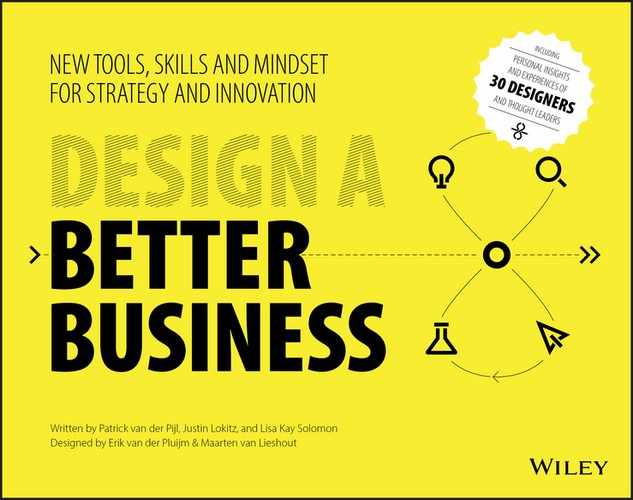Page 34
MASTER FACILITATION
The design journey is all about preparation, and it’s the facilitator’s job to make that preparation and the journey ahead easy for everyone involved. A skilled facilitator is the master of ceremonies as well as the keeper of the light – the energy and intentionality in the room. It is up to the facilitator to help the team achieve the outcomes expected efficiently and effectively.
—Emmanuel Buttin Business Line CFO, BNP Paribas
MASTER OF CEREMONIES
A facilitator (you or someone else) must run meetings according to a screenplay while also providing space for the team to discuss and make decisions along the way, always being cognizant of the time (and need for frequent breaks, coffee, and food). The facilitator must also capture (or elect a scribe to capture) salient points of view, ideas, and decision points along the way.
Of course, there are many ways to do this. Using a whiteboard, chalkboard, or large flip charts, you can capture short bullet points about what’s been said.
BECOMING A FACILITATOR
If you want to run a design process on strategy and innovation smoothly, engage with your team members, and develop leadership opportunities, you need facilitator skills. The more you know about how to design and run a good learning process, the more team members will feel empowered about their own ideas and participation. They will take on ownership and responsibility, resulting in better outcomes.
1 LEARN TO MANAGE ENERGY
Facilitation is first and foremost about managing energy. To maximize output, the team must feel energized. “Energy,” in this case, describes how willing and able people are to contribute. “Good” energy helps the process. A discussion at the right time does just that. But hold a discussion at the wrong time, and exhaustion will quickly set in. The core skill of the facilitator is to manage the balance between going into the weeds and building energy.
2 IT’S MORE THAN JUST THE MEETING
Facilitation isn’t about simply facilitating a discussion or a meeting; it’s about facilitating the whole process. You’ll need to become the mastermind of the operation. It’s not about being right; it’s about being effective in how you help teams by designing and managing the process. Facilitation is about the environment, information, the network, the team, and the energy. This includes communicating each step the team will take, as well as the promises made.
Page 35
3 WEAR THE RIGHT HAT AT THE RIGHT TIME
There are times to be utterly optimistic and there are times to be critical. For instance, as ideation is about idea creation and expansion 90% of the time and evaluation and selection 10% of the time, it’s vital that everyone on the team is wearing their optimistic hat at least 90% of the time, during idea creation.
But when it’s time for evaluation and selection, it’s okay for everyone to put on their critical hats. And in both cases, it’s the job of the facilitator to ensure that optimism and criticality are employed at the right place and time in the journey.
4 VISUAL FACILITATION
The spoken word is intangible. What has been said five minutes ago only exists in memory. This prompts participants to repeat their argument over and over again.
David Sibbet, the pioneer of visual facilitation, found that by capturing the arguments on a big flip chart, big enough for all the participants to read, the need for repetition vanishes. Take a marker and write down what has been said, to allow the discussion to move on. ![]()
DOING THE DISHES
In a meeting you have two types of people: the ones with “focused eyes” and the ones with “absent eyes”; business people versus designers. They play different roles in a meeting, but both are indispensible in a team.
The former are often misjudged to be shortsighted and judgmental, when they are actually taking things at face value (by nature). They give their opinions freely and have quick answers to everything. The latter’s glazed-over looks are certainly not signs of disinterest. In their heads they are building on ideas and visualizing opportunities before speaking out.
From an outsider’s perspective, it’s hard to see how these people can work together effectively. In fact, you need both kinds of people on a team: fast movers and thinkers. It is my job to bridge those two worlds: Make them combine their brainpower and get them to share the same vision. When I see these situations arising, I offer a spark (or fire starter) to help steer them in the right direction. Then I step out to do the dishes while they perform miracles together.

Markus Auerbach
Director, Audi Innovation Research
